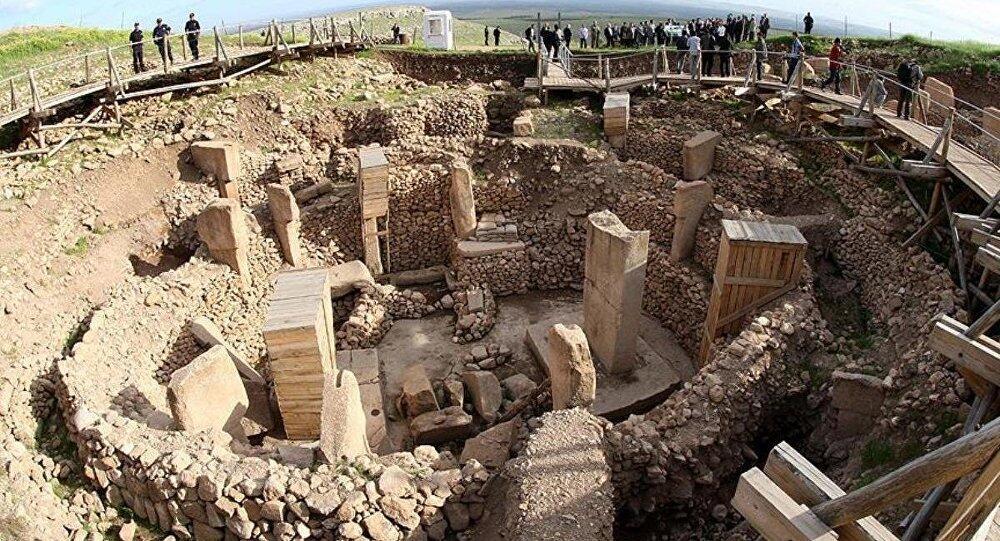
In the 1990s, German archaeologist Klaus Schmidt uncovered Stonehenge-type monuments at a site in Turkey called Göbekli Tepe, or Potbelly Hill. It was built around 11,000 to 12,000 years ago (9500 BC), during the Neolithic period. This predates Stonehenge (2500 BC) by 7,000 years, and is hundreds of years before any evidence of farming or animal domestication. Some of the megaliths are 5.5 meters tall and weigh 45 metric tons. How did hunter-gatherers construct this site?
The other interesting thing about the site is that there is no evidence of settlement, such as cooking hearths. It seems to have been a meeting place, not a settlement. The discovery challenged a long-standing belief that organized religion appeared only after cultures began adopting agriculture. Schmidt believed the site showed that domestication of crops and animals occurred as a by-product of hunter-gatherers coming together for religious purposes. He wrote an article entitled “Zuerst kam der Tempel, dann die Stadt” - First came the Temple, then the City.
As Leidy Klotz writes in [[Subtract]]:
> The idea of the temple provided the first excuse for disparate bands to convene. Then, the long-term commitment needed to build and then maintain it drove the hunter-gatherers to seek less transient food sources.
He uses Potbelly Hill and other monuments as examples of our cultural tendency to build:
> Rome’s Colosseum and Coba’s pyramid are records of a surprising kind of adding. These towering displays of excess are so common they have earned an academic name: “monumental architecture.” Here is renowned archaeologist Bruce Trigger describing what counts as monumental architecture: “Its principal defining feature is that its scale and elaboration exceed the requirements of any practical functions.” The form is literally defined by the fact that it adds well beyond what is necessary.
>
> Monumental architecture is a reliable sign of civilization. Whether the ziggurats of Mesopotamia or the pyramids in Egypt and China, these massive but marginally useful structures grew at the same time as the cities around them.
Noah Yuval Harare also talks about Göbekli Tepe in [[Sapiens]].
---
Sources:
https://www.npr.org/sections/parallels/2014/10/24/358577089/in-southeast-turkey-a-long-history-of-bloodshed-and-worship
https://www.livescience.com/gobeklitepe-built-with-geometry.html
https://onartandaesthetics.com/2017/08/25/first-came-the-temple-then-the-city-the-fascinating-site-of-gobekli-tepe/